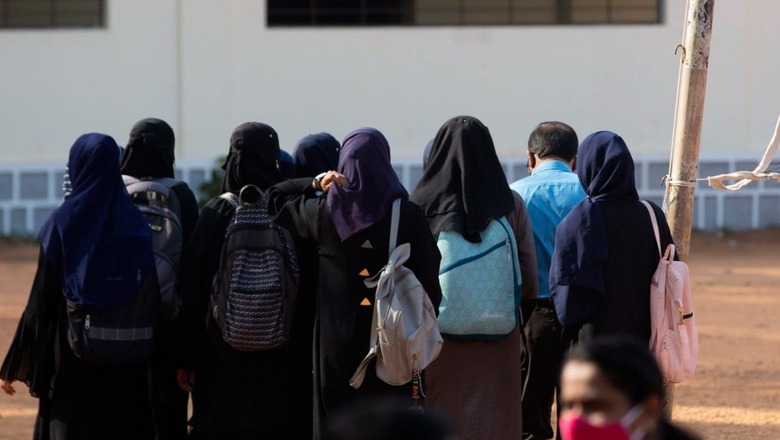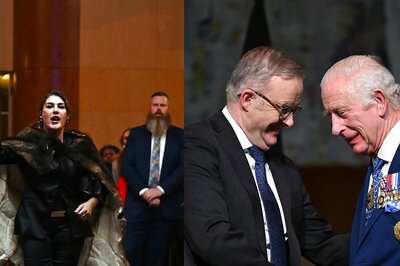
views
Days after the Supreme Court rejected an urgent hearing on the hijab row, the Karnataka High Court’s three-member bench adjourned the matter for Tuesday afternoon after resuming the hearing on Monday. Last week, in an interim order, the court had restrained students from wearing any ‘religious garment’ in classrooms of colleges wherever it is banned until a final order is given.
Appearing for the petitioners, advocate Dev Datt Kamat argued that wearing headscarves is an essential practice of the Islamic faith. He said that the Karnataka government order was a non-application of mind. “The government order is in the teeth of Article 25 and it is not legally sustainable,” Kamat said.
Hijab row | Senior Advocate Kamat apprises Karnataka HC that the GO (government order) says wearing of headscarves is not protected by Art 25 and the Government Order says it to leave it to College Development Committee to decide whether it shall be a part of the uniform or not.— ANI (@ANI) February 14, 2022
He also insisted that Muslim women be allowed to wear hijab in public.
On behalf of the girls of the government pre-university college in Udupi, who petitioned in favour of hijab, Kamat challenged the government order restricting the “use of any cloth that can disturb the peace, harmony and, law and order”.
He urged the court to allow them to wear Islamic headscarves of the same colour as that of the school uniform. “I am not only challenging the GO but also asking for a positive mandate for allowing me to wear a headscarf of the same colour of the uniform,” Kamat said.
He also said the College Development Committee (CDC) comprising an MLA has been authorised by the government to decide the uniform. “A CDC comprising an MLA is an extra-constitutional authority and a third party to decide what to wear. The government has assigned its responsibility to this third party,” he said.
Kamat said in court that girls studying in the second pre-university class have been wearing hijab ever since they took admission two years ago. “Due to the other students who suddenly sported a cloth displaying their religious identity, the fundamental rights of his clients were curtailed,” the lawyer argued.
“State says that wearing of headscarf can be a problem as other students want to display their religious identity,” Kamat pointed out.
The bench had given an interim order last week that no religious symbols are allowed for the students in schools and colleges until the final order of the court. The order banned both hijab and saffron shawls inside the school and college premises.
The larger bench also set aside the vehement arguments of petitioners seeking orders from the government for allowing students to wear hijab in classrooms.
However, petitioners moved the Supreme Court challenging the interim order banning the hijab in classrooms. The Supreme Court had rejected the demand for urgent hearings by petitioners and said that it will only interfere at an appropriate time.
The widespread protests began against the hijab ban after three colleges in Karnataka had stopped the entry of hijab-clad female students into the college premises, which later spread to many other institutions where girls wearing hijabs were not allowed entry. While the girls were protesting to wear hijabs, the rest of the students belonging to different communities launched a ‘saffron scarf’ protest, which turned violent at one college and forced the police to fire teargas to control the flare-up.
Read all the Latest India News here




















Comments
0 comment